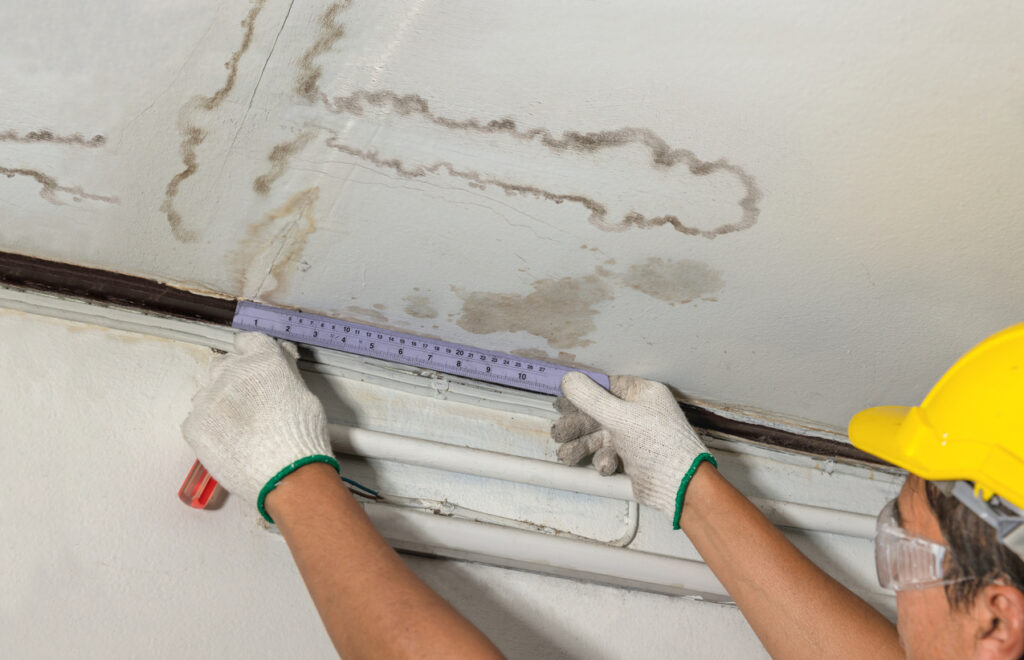Desaturation testing stands at the forefront of modern roofing assessments, offering invaluable insights into a roof’s resilience against moisture intrusion. In this comprehensive guide, we delve into the intricacies of desaturation testing, exploring its significance, methodology, and the benefits it provides to roofing professionals and property owners alike.
Understanding Desaturation Testing
Desaturation testing serves as a vital tool in evaluating a roofing system’s resistance to moisture absorption. By subjecting roofing materials to simulated moisture conditions, this testing method provides crucial data on their ability to withstand moisture intrusion. Through controlled exposure to moisture, desaturation testing helps identify vulnerable areas prone to water damage, allowing for targeted interventions to bolster the roof’s defenses.
The Methodology Behind Desaturation Testing
Typically conducted in a laboratory setting, desaturation testing simulates real-world conditions to assess how materials absorb and retain moisture. Here’s a step-by-step explanation of the desaturation testing process:
1. Sample Preparation:
- Collect representative samples of the roofing material to be tested. These samples should accurately reflect the composition and characteristics of the material used in the roofing system.
- Ensure that the samples are clean, dry, and free from any contaminants that could interfere with the testing process.
2. Conditioning:
- Place the samples in a controlled environment with specific temperature and humidity conditions. This conditioning period allows the samples to reach equilibrium moisture content, ensuring consistent starting conditions for the test.
3. Initial Weight Measurement:
- Weigh each sample using a precision scale before subjecting them to moisture exposure. Record the initial weight of each sample as the baseline measurement.
4. Moisture Exposure:
- Subject the samples to simulated moisture conditions by exposing them to a controlled moisture source. This can be achieved through methods such as immersion in water, exposure to high humidity environments, or application of moisture directly onto the surface of the samples.
5. Monitoring:
- Periodically monitor the samples throughout the moisture exposure period. This involves recording any changes in weight or appearance of the samples over time.
6. Final Weight Measurement:
- After the specified exposure period, remove the samples from the moisture source and allow them to dry completely.
- Weigh each sample again using the same precision scale used for the initial measurement. Record the final weight of each sample.
7. Calculation:
- Calculate the change in weight for each sample by subtracting the initial weight from the final weight. This difference represents the amount of moisture absorbed by the sample during the testing period.
8. Data Analysis:
- Analyze the results to determine the moisture absorption characteristics of the roofing material. Compare the change in weight for each sample to assess their relative resistance to moisture intrusion.
- Interpret the data to identify any trends or patterns that may indicate areas of concern or potential weaknesses in the roofing material.
9. Reporting:
- Compile the findings into a comprehensive report detailing the results of the desaturation testing process. Include relevant data, analysis, and recommendations for further action based on the findings.
10. Application:
- Use the insights gained from desaturation testing to inform decision-making regarding roofing material selection, installation methods, and maintenance practices. Implement any recommended measures to enhance the moisture resistance and performance of the roofing system.
By following these steps, desaturation testing provides valuable information about the moisture absorption characteristics of roofing materials, helping to ensure the durability and longevity of roofing installations.
Benefits of Desaturation Testing
Early Detection of Vulnerabilities
Desaturation testing serves as an early warning system for moisture-related vulnerabilities in roofing materials. By subjecting samples to controlled moisture exposure, even subtle changes in weight can indicate potential areas of concern. Detecting these vulnerabilities at an early stage enables roofing professionals to take proactive measures to prevent water damage before it escalates. This early intervention can save both time and money by addressing issues before they lead to more extensive damage or require costly repairs.
Customized Solutions
One of the key benefits of desaturation testing is its ability to provide targeted insights into the moisture resistance of specific roofing materials. By identifying areas with inadequate moisture resistance, roofing professionals can develop customized solutions tailored to address the unique needs of each roofing system. This tailored approach allows for the implementation of targeted interventions, such as applying sealants or installing additional waterproofing layers, to effectively mitigate moisture-related issues. By addressing vulnerabilities in a targeted manner, desaturation testing enables roofing professionals to optimize the performance and longevity of roofing systems.
Enhanced Durability
By identifying and addressing moisture-related vulnerabilities, desaturation testing contributes to the enhanced durability of roofing systems. Proactively addressing these vulnerabilities helps to reinforce the integrity of the roofing materials, making them more resilient to moisture intrusion over time. This increased resistance to moisture damage extends the lifespan of the roofing system, reducing the need for premature replacements and minimizing the risk of costly repairs. Ultimately, desaturation testing plays a crucial role in ensuring the long-term durability and performance of roofing installations, providing peace of mind to property owners and roofing professionals alike.
Applications of Desaturation Testing
Desaturation testing finds wide-ranging applications in the roofing industry, including:
- Assessing the moisture resistance of various roofing materials, such as membranes, shingles, and coatings.
- Evaluating the effectiveness of waterproofing systems and sealants in preventing moisture intrusion.
- Identifying potential points of weakness in roofing assemblies, such as seams, joints, and penetrations.
- Empowering roofing professionals to take proactive measures to safeguard against moisture-related issues before they escalate. By identifying vulnerabilities early on, desaturation testing enables timely interventions, minimizing the risk of extensive water damage and costly repairs down the line.
Challenges and Considerations
While desaturation testing offers valuable insights, it’s essential to consider various factors that may influence the results. Factors such as temperature, humidity levels, and material composition can impact the accuracy of desaturation testing. Therefore, it’s crucial to conduct testing under controlled conditions and interpret the results in conjunction with other diagnostic methods for a comprehensive assessment.
Comprehensive Forensic Roof Testing
Desaturation testing stands as a cornerstone of modern roofing assessments, providing critical data on a roof’s resilience against moisture intrusion. By enabling early detection of vulnerabilities and facilitating targeted interventions, desaturation testing helps roofing professionals ensure the longevity and performance of roofing systems. As moisture-related issues continue to pose significant challenges in the roofing industry, desaturation testing emerges as an indispensable tool for maintaining the integrity of roofing installations.
CORE Forensics offers a comprehensive range of forensic roof testing services aimed at ensuring the longevity of roofing systems. With our expertise and cutting-edge methodologies, we provide roofing professionals with the insights they need to make informed decisions and address potential vulnerabilities effectively. Whether it’s identifying delamination, assessing water resistance through water column testing, or conducting microscopic evaluations, our team is committed to delivering accurate and actionable data. By partnering with CORE Forensics, roofing professionals can leverage our suite of testing services to enhance the durability and performance of their roofing installations, ultimately providing peace of mind to property owners and ensuring the long-term success of their projects. Contact us to learn more.

